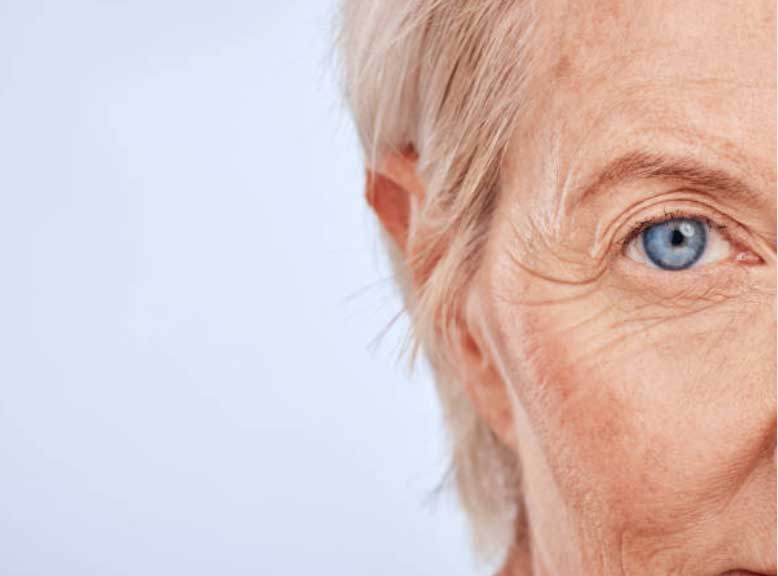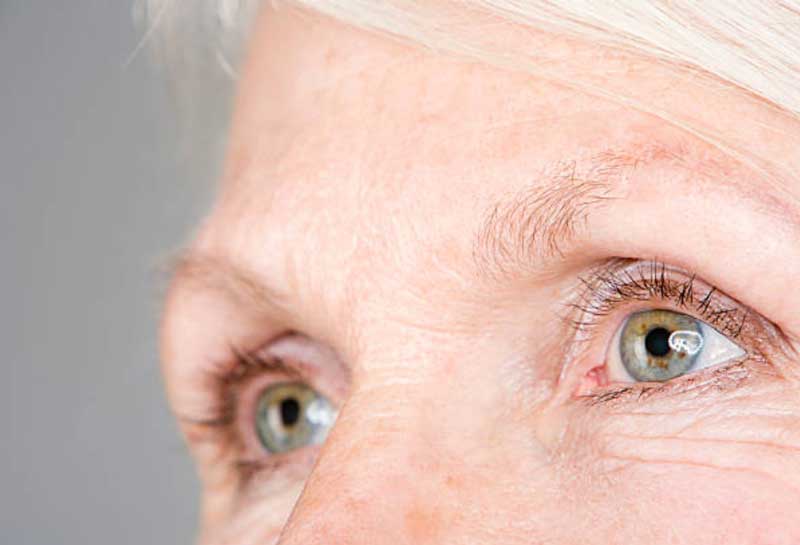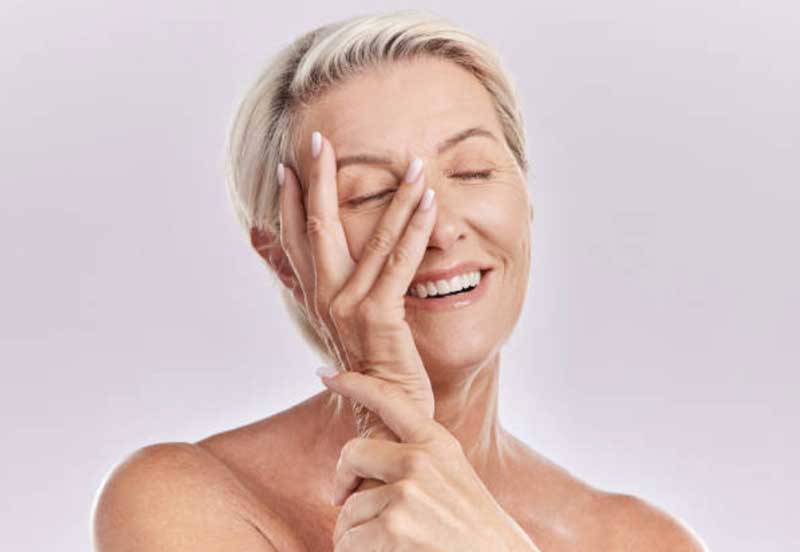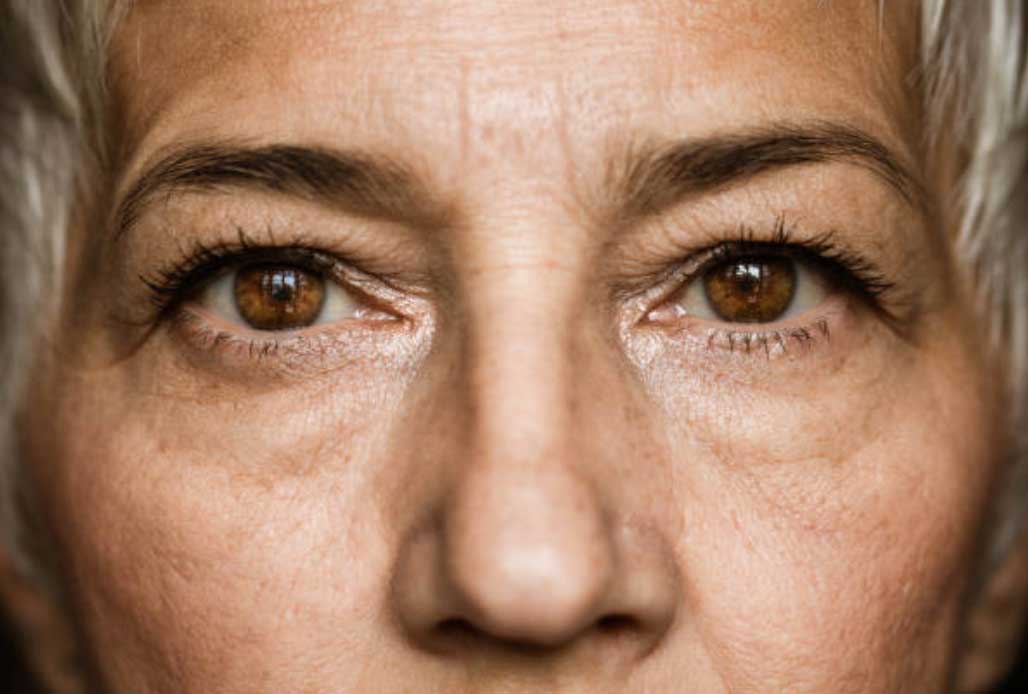Common Causes and Effective Solutions for Hooded Eyelids
Hooded eyelids are a common facial feature where a fold of skin droops over the crease of the eyelid, making the lid appear smaller. This physical trait can be either a natural part of someone’s anatomy from birth or develop over time due to various factors. With extensive skin excess this can spill over the eyelashes affecting the field of vision – hence blepharoplasty can be a medical as well as an aesthetic concern. It is important to remember though that hooded eyelids are a widespread characteristic and can be seen in people of all ages and backgrounds and is nothing abnormal.
The commonest reason for the development of hooded eyelids is the natural elasticity of the skin tends to diminish with age, and that a lifetime’s worth of rubbing the eyelids gradually stetches them. However, age isn’t the only factor at play here. Genetic predisposition, lifestyle choices, and environmental influences also play significant roles.
In this blog, Consultant Plastic Surgeon Anthony MacQuillan will discuss what causes hooded eyelids and solutions to correct them.
Definition and Characteristics of Hooded Eyelids
Hooded eyelids are characterised by an extra fold of skin that droops over the crease of the eyelid, partially or completely obscuring it. This feature can vary significantly from person to person, with some having a slight hooding and others experiencing more pronounced coverage. The degree of hooding can also differ between the two eyes in the same individual.
One key aspect of understanding hooded eyelids is recognising that they are a natural variation of the human anatomy. They are not a defect or a health issue in themselves. However, they can sometimes lead to practical concerns, such as difficulty in applying makeup or as mentioned previously in certain cases a reduced field of vision. In terms of appearance, hooded eyelids can give the eyes a smaller, more closed look, which is a significant factor for many people considering cosmetic solutions.
Comparing Normal and Hooded Eyelids
To better understand hooded eyelids, it’s helpful to compare them with what’s typically considered ‘normal’ eyelids. In a youthful eyelid there is about 3 to 4mm of skin visible directly above the lashes – this is known as pre tarsal skin (as there is a strip of cartilage like tissue directly beneath this portion of the lid called the tarsal plate – this gives the edge of the lid its shape and is where the eyelashes grow from).
In contrast, with hooded eyelids, this portion of eyelid skin is either partially or entirely hidden by the additional skin fold above. To those observing another’s eyelid, loss of this pre tarsal skin (also known as pre tarsal ‘show) is one of the defining characteristics of age and also from a practical point of view it can make the application of eyeshadow and eyeliner difficult (and is once of the commonest causes of patients seeking an upper lid blepharoplasty). An interesting point relating to this is that makeup artists often use different techniques for hooded eyelids to enhance the eyes’ appearance effectively.

3. Common Causes of Hooded Eyelids
Here are some causes of hooded eyelids:
1. Genetic Factors
Hooded eyelids are often a trait inherited from one’s parents or grandparents, indicating a strong genetic influence. If your family members have hooded eyelids, there’s a higher chance you might have them too. If you are someone who suffers with recurrent eyelid swelling (known as angioedema) this causes repeated episodes of eyelid swelling which can translate into excess lid skin.
Genetics also play a role in how your eyelids change as you get older. Some people may develop more pronounced hooding due to their inherited skin elasticity and facial structure. Understanding your family history can provide insights into whether your hooded eyelids are a result of genetics and can help predict how they might change over time.
2. Age-Related Changes
As you age, your skin loses elastin and collagen and collagen fibres, making it thinner and more prone to stretching. This is particularly noticeable in delicate areas like the eyelids. The thinning of skin and weakening of muscles around the eyes then leads to the eyelid skin folding over itself, creating or accentuating a hooded appearance.
Age-related changes can start as early as your 30s or 40s, but they are more common in later years. It’s a natural part of ageing, and everyone experiences it to some degree. However, the extent of hooding due to ageing can vary greatly among individuals.
3. Lifestyle and Environmental Factors
Your lifestyle choices and environmental factors can influence the development or exacerbation of hooded eyelids. Factors such as prolonged exposure to sunlight without proper eye protection can accelerate the ageing of the skin around your eyes. Similarly, habits like smoking can contribute to premature skin ageing and weakening of the skin’s supportive structures.
Sleep patterns and general health also play a role. Lack of sleep and high stress can lead to puffiness and other changes around the eyes, potentially leading to or worsening hooded eyelids over time. A balanced diet and adequate hydration are beneficial for maintaining skin elasticity and overall eye health.
Reasons to Correct Hooded Eyelids
Some people live with hooded eyes all their lives, while others might try to find solutions to correct them. Here are some reasons why people want to correct hooded eyelids:
1. Effects on Vision
While hooded eyelids are often a cosmetic concern, they can also have practical implications, particularly on vision. In some cases, the hooding can be severe enough to limit the field of vision, especially the peripheral vision. This reduction can affect daily activities like driving, reading, or using a computer. It can also lead to discomfort as you might find yourself constantly raising your eyebrows to see better, which can be tiring and uncomfortable.
2. Aesthetic Concerns
From an aesthetic standpoint, hooded eyelids can significantly impact how you feel about your appearance. Many people feel that hooded eyelids make their eyes look smaller or that they appear tired or older than they actually are. This perception can affect self-confdence and how individuals present themselves in social or professional settings.
The unique shape of hooded eyelids also presents challenges in makeup application. Traditional makeup techniques might not work as effectively, and finding ways to enhance the eyes without exaggerating the hooding can be a learning curve.

Non-Surgical Solutions for Hooded Eyelids
Let’s have a look at what can be done to correct hooded eyelids:
Makeup Techniques
For many with hooded eyelids, makeup can be a powerful tool in enhancing the appearance of the eyes. The key is to understand how to apply makeup in a way that complements the unique shape of hooded eyelids. This might include techniques like highlighting the brow bone to create the illusion of more lid space, or using eyeliner and eyeshadow to give the eyes a more open appearance. Experimenting with different techniques and finding what works best for your eye shape can be a fun and creative process.
Skincare Practices
Good skincare is essential for maintaining the health and appearance of the skin around the eyes. Gentle cleansing, regular moisturising, and using sun protection can help preserve skin elasticity and prevent further sagging. Products containing ingredients like retinol, hyaluronic acid, and peptides can be particularly beneficial for improving skin texture and firmness. It’s also important to be gentle when applying and removing makeup to avoid unnecessary stress on the delicate eyelid skin.
Lifestyle Adjustments
Lifestyle choices play a significant role in the health of your skin. Getting enough sleep, managing stress, and maintaining a healthy diet rich in antioxidants can all contribute to healthier skin. Regular exercise can also improve overall circulation, which can benefit the skin. Additionally, avoiding smoking and limiting alcohol intake can have a positive impact on your skin’s appearance and health.
For those who spend a lot of time in front of screens, taking regular breaks to rest the eyes can help reduce strain and puffiness. Wearing sunglasses when outdoors can protect the delicate skin around the eyes from harmful UV rays, which can accelerate aging.Surgical Solutions for Hooded Eyelids
For those seeking a more permanent solution to hooded eyelids, eyelid surgery, known as blepharoplasty, is an option. This surgical procedure involves removing excess skin, muscle, and sometimes fat from the upper eyelid. The goal is to create a more defined eyelid crease, restore pretarsal show (see “comparing normal and hooded eyelids’ section above) and open up the eye area, resulting in a rejuvenated and more alert appearance. It’s important to have realistic expectations and understand that while blepharoplasty can offer significant improvements, it also comes with the usual risks associated with surgery.
Preparing for Blepharoplasty Surgery
Preparation for eyelid surgery involves several steps to ensure the best possible outcome. This includes a thorough consultation with Anthony to discuss your goals, medical history, and any potential risks. You may be asked to undergo certain medical tests or adjust your current medication regimen. It’s also advised to stop smoking well in advance of the surgery, as smoking can affect the healing process. You will need to have an up to date eye test prior to surgery to ensure any eye health issues have been identified and addressed prior to surgery.
Leading up to the surgery, you should arrange for someone to drive you home afterward and assist you for a few days, if necessary. Preparing your home for a comfortable recovery, such as having ice packs, clean towels, and any prescribed medications on hand, is also essential.
Recovery and Care
Recovery from eyelid surgery involves a few weeks of downtime. Immediately following the procedure, you can expect some swelling, bruising, and discomfort, which can be managed with medication and cold compresses. Anthony will provide detailed instructions on how to care for your eyes during this period, including how to clean the area and when to return for a follow-up appointment.
It’s crucial to protect your eyes from sunlight and avoid strenuous activities during the recovery phase. Most people can return to normal activities within a couple of weeks, but it may take several months for the final results to become visible.
Long-term Maintenance Strategies after Blepharoplasty
For those who have undergone treatments or surgery for hooded eyelids, or for anyone wishing to maintain healthy eyelid skin, long-term care is key. This includes continuing with a good skincare routine, staying hydrated, and getting adequate sleep. Regular check-ups with your plastic surgeon can also be helpful to monitor the health of your skin and discuss any concerns.
If you’ve had surgical intervention, following Anthony’s advice on post-operative care is vital. This might include specific exercises, massages, or follow-up treatments to ensure the best possible outcome. Additionally, maintaining a healthy lifestyle will not only benefit your eyelids but your overall well-being.

FAQs about Hooded Eyelids
Can exercises for the eyes reduce the appearance of hooded eyelids?
- While certain exercises claim to strengthen the muscles around the eyes, there is limited scientific evidence supporting the effectiveness of these exercises in significantly reducing the appearance of hooded eyelids. Gentle eye exercises may help in maintaining overall eye health and muscle tone.
Are there any specific eye drops or medications that can help with hooded eyelids?
- There are no eye drops or medications specifically designed to treat hooded eyelids. It’s important to address any underlying conditions that may contribute to eye strain or irritation. Always consult with a healthcare professional before using any medication for eye-related issues.
Can allergies contribute to the appearance of hooded eyelids?
- Yes, allergies can sometimes lead to swelling or puffiness around the eyes, which might temporarily accentuate the appearance of hooded eyelids. Treating the allergies can help reduce this swelling and potentially lessen the hooded appearance.
Is it safe to wear contact lenses with hooded eyelids?
- Yes, it’s generally safe to wear contact lenses with hooded eyelids. But if the eyelids significantly interfere with your ability to insert or remove lenses, or if they cause discomfort while wearing lenses, it’s advisable to consult with an eye care professional.
Do hooded eyelids affect the choice of eyeglasses frames?
- Hooded eyelids may influence the style or size of eyeglasses frames that feel comfortable and aesthetically pleasing. Frames that sit higher on the face or have a larger lens area can complement hooded eyelids and provide a better field of vision.
Further Reading about Face Procedures with Consultant Plastic Surgeon Anthony MacQuillan
- Read more about Eyelid Surgery Procedure Page
- Read more about Top Tips to Sleep Better After Facelift Surgery
- Read more about Visible Effects of Ageing That Can Be Improved with a Facelift
- Read more about Recovery after Blepharoplasty
Medical References about Hooded Eyelids
- Eyelid drooping – Medline Plus
- Ptosis (Droopy Eyelid) – Cleveland Clinic
- What Is Ptosis? – WebMD
- Blepharoplasty – Mayo Clinic
- What To Know About Hooded Eyes – Medical News Today



